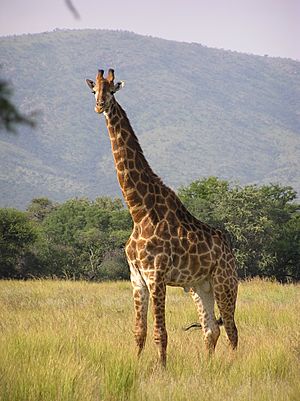Central Kalahari Game Reserve facts for kids
The Central Kalahari Game Reserve is a huge national park in the Kalahari Desert of Botswana. It was started in 1961 and covers about 52,800 square kilometers (which is bigger than the Netherlands!). This makes it the second largest game reserve in the whole world. It's a special place where many wild animals live freely.
History of the Reserve
The Bushmen, also known as the San people, have lived in this area for thousands of years. They traditionally lived as nomadic hunters and gatherers. This means they moved around to find food and resources.
In recent times, there have been some changes for the Bushmen. The government of Botswana tried to move some of them out of the reserve. However, a court in Botswana later said that the Bushmen had the right to live in the reserve.
A large bush fire happened in and around the park in September 2008. It burned about 80 percent of the reserve. The cause of this big fire is still unknown.
Amazing Wildlife
The Central Kalahari Game Reserve is home to many different kinds of animals. You can find large animals like elephants, giraffes, and lions. There are also cheetahs, leopards, and wild dogs.
Other animals living here include spotted hyenas and brown hyenas. You might also see smaller creatures like meerkats and honey badgers.
Many types of antelopes roam the land, such as wildebeest, springboks, and gemsboks. Zebras and ostriches also live in this vast area.
The land in the reserve is mostly flat or gently rolling. It has many bushes and grasses growing over sand dunes. There are also areas with larger trees. Some old river valleys are now dry salt pans. Four ancient rivers wind through the reserve, including Deception Valley. This valley started forming about 16,000 years ago.
Gallery
See also
 In Spanish: Reserva de caza del Kalahari Central para niños
In Spanish: Reserva de caza del Kalahari Central para niños




